Mashed Cauliflower and Cheese Casserole
Creamy, cheesy, and topped with a crispy golden crust, mashed cauliflower and cheese casserole is a crowd-pleaser even cauliflower skeptics will love.

Cauliflower was one of those veggies I wouldn’t touch as a kid, but somewhere along the way, I learned to like it — I’ll even eat it raw now! I’ve heard that when made right, mashed cauliflower can taste surprisingly close to mashed potatoes.
Since I’m always looking for ways to add more cauliflower to my diet, I had to give it a try. If you love creamy comfort food but want something lighter than traditional mashed potatoes, this Mashed Cauliflower and Cheese Casserole is about to become your new favorite side dish.
Looking for more ways to prepare cauliflower? Check out this recipe for Buffalo Cauliflower Bites.
“Such a great treat! I enjoyed making it and my family loved it!”
-Jeannine
Recipe at a glance
- Creamy mashed cauliflower baked with melted cheese and buttery breadcrumbs.
- All the indulgence of cheesy potatoes without the heaviness.
- Prep the casserole a day in advance, then bake when ready to serve.
- A side dish that fits in at both weeknight dinners and holiday tables.
Summarize and save this content on
Jump to:
Ingredients you will need
Cauliflower casserole is rich, cheesy, and full of flavor — yet made with wholesome, simple ingredients that make it a little easier on the waistline. To make this baked cheesy cauliflower casserole, you will need:
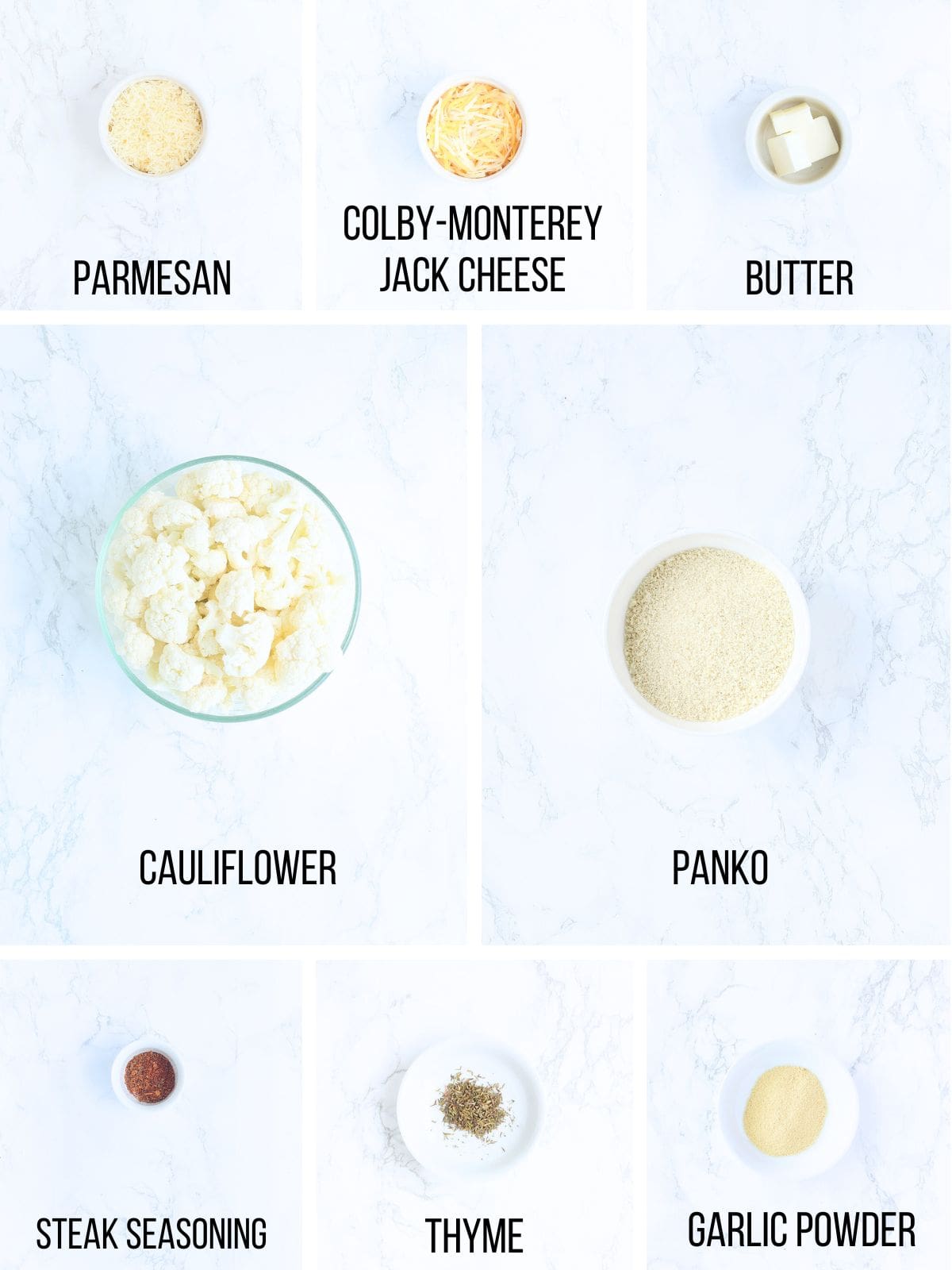
See the recipe card for full information on ingredients and quantities.
- Cauliflower – When steamed and mashed, cauliflower becomes creamy and smooth, creating a lighter, lower-carb alternative to mashed potatoes.
- Parmesan Cheese – Adds a salty, nutty flavor that enhances the overall richness of the cauliflower casserole recipe. It also helps thicken the mash slightly as it bakes.
- Colby-Monterey Jack Cheese – Melts beautifully for that gooey, cheesy texture. Its mild, buttery flavor balances the sharper notes of the Parmesan.
- Butter – Gives the cauliflower mash its silky, indulgent texture and adds richness to both the casserole and the breadcrumb topping.
- Garlic Powder – Provides a subtle, savory depth without overpowering the delicate flavor of the cauliflower.
- Montreal Steak Seasoning – A blend of spices and herbs that brings a bold, savory punch and a touch of peppery heat.
- Thyme Leaves – Adds a gentle, earthy aroma that complements the cheeses and gives the dish a comforting, homey flavor.
- Panko Bread Crumbs – Create the perfect crunchy topping with a hint of Italian herbs, giving contrast to the creamy mash underneath.
- Salt and Pepper – Simple but essential for bringing all the flavors together and keeping the dish well-balanced.
Substitutions and Variations
- Use different cheeses: Try sharp cheddar cheese, Gruyère, or mozzarella instead of Colby-Monterey Jack for a different flavor profile. Sharp cheddar adds bite, while Gruyère gives it a French-inspired richness.
- Make it low-dairy: Swap the butter for olive oil and use dairy-free cheese alternatives to make this tasty casserole lactose-free or vegan-friendly.
- Add protein: Stir in cooked, crumbled bacon, diced ham, or shredded chicken before baking for a heartier dish.
- Boost the flavor: Mix in roasted garlic instead of garlic powder, or sprinkle fresh herbs like parsley, chives, or rosemary on top before serving.
- Add vegetables: Fold in cooked spinach, caramelized onions, or roasted broccoli for extra color and nutrients.
- Make it spicy: Add a pinch of crushed red pepper flakes or use pepper jack cheese for a little heat.
- Try a keto version: Use plain pork rind crumbs or almond flour instead of panko for a low-carb topping that still gets crispy.
How to make mashed cauliflower and cheese casserole
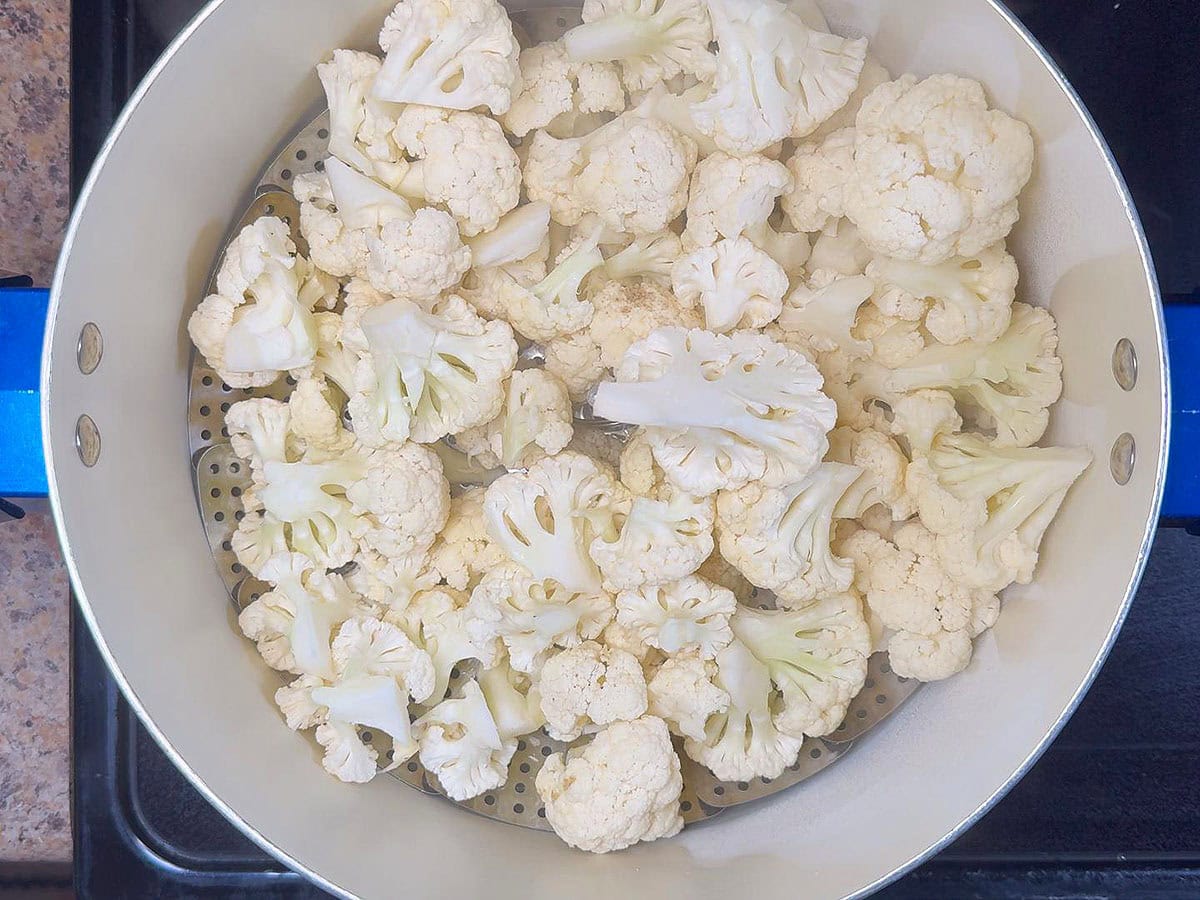
Step 1: Fill a large pot about ¼ of the way with water and bring to a boil. Place the cauliflower florets in a steamer basket over the pot, cover, and reduce heat to medium. Steam until the cauliflower is fork tender, about 20 minutes.
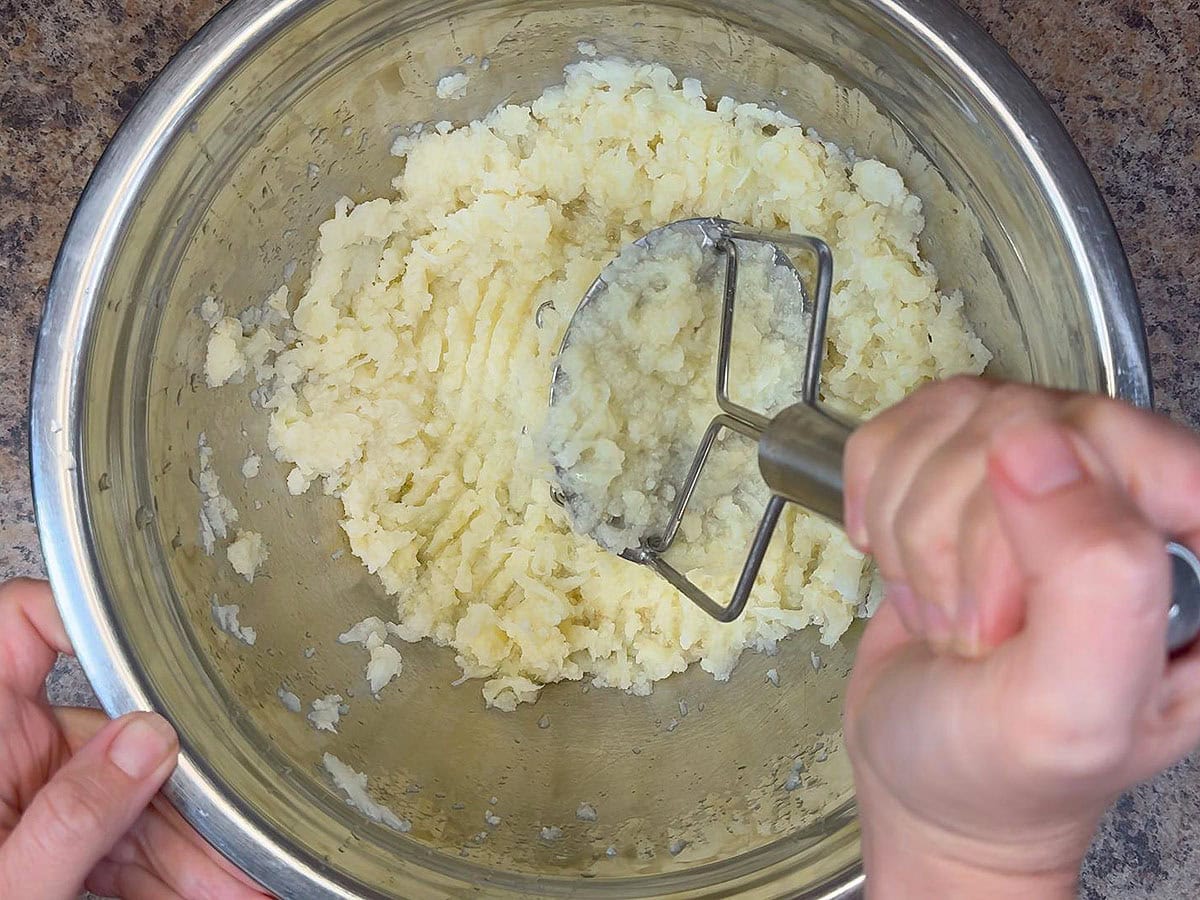
Step 2: Transfer the steamed cauliflower to a large bowl. Mash with a potato masher or ricer. If you want the texture of the tender cauliflower to be as close to that of mashed potatoes as you can get it, I like to run my cauliflower twice through a food mill until smooth.
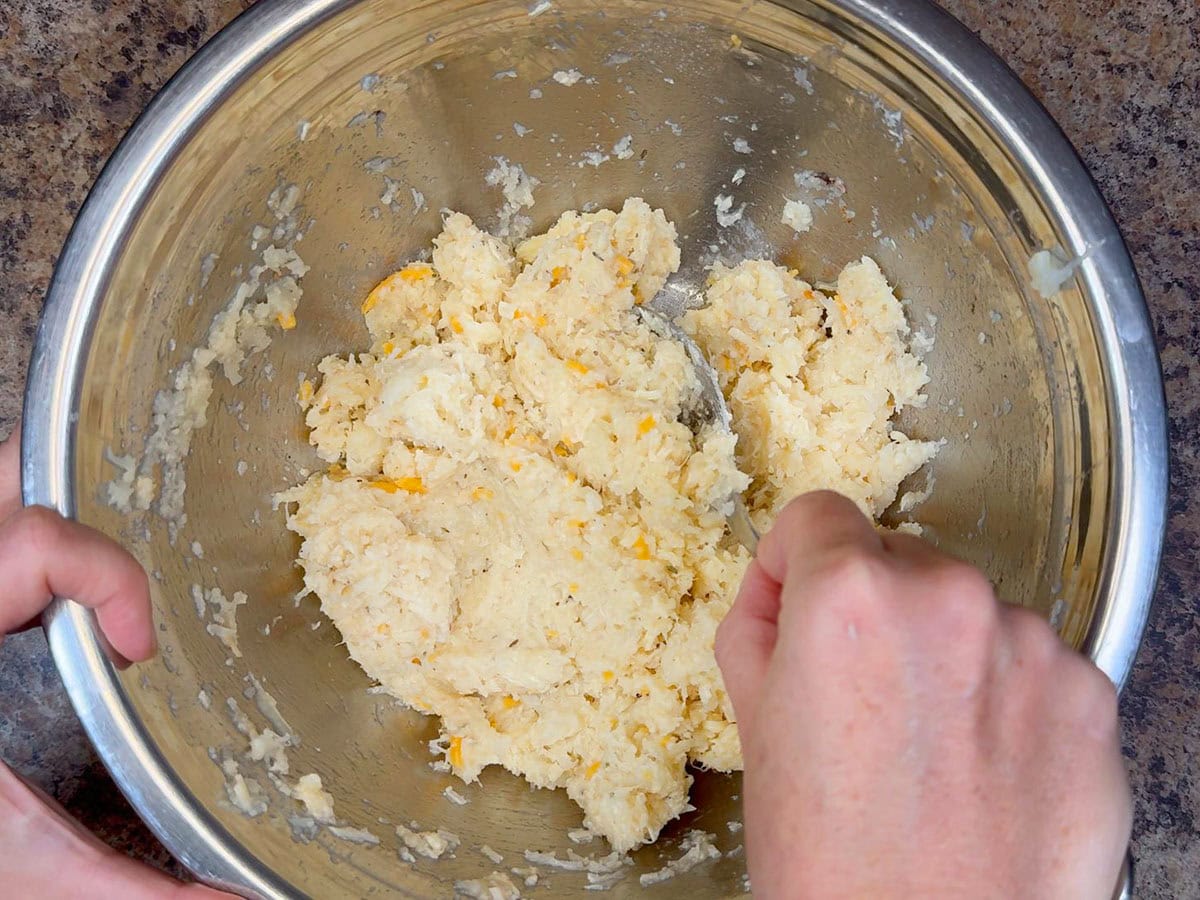
Step 3: Stir in the Parmesan, shredded cheese, butter, garlic powder, Montreal steak seasoning, thyme, salt, and pepper until well combined. Mix the Panko breadcrumbs with melted butter. Season with salt and pepper.
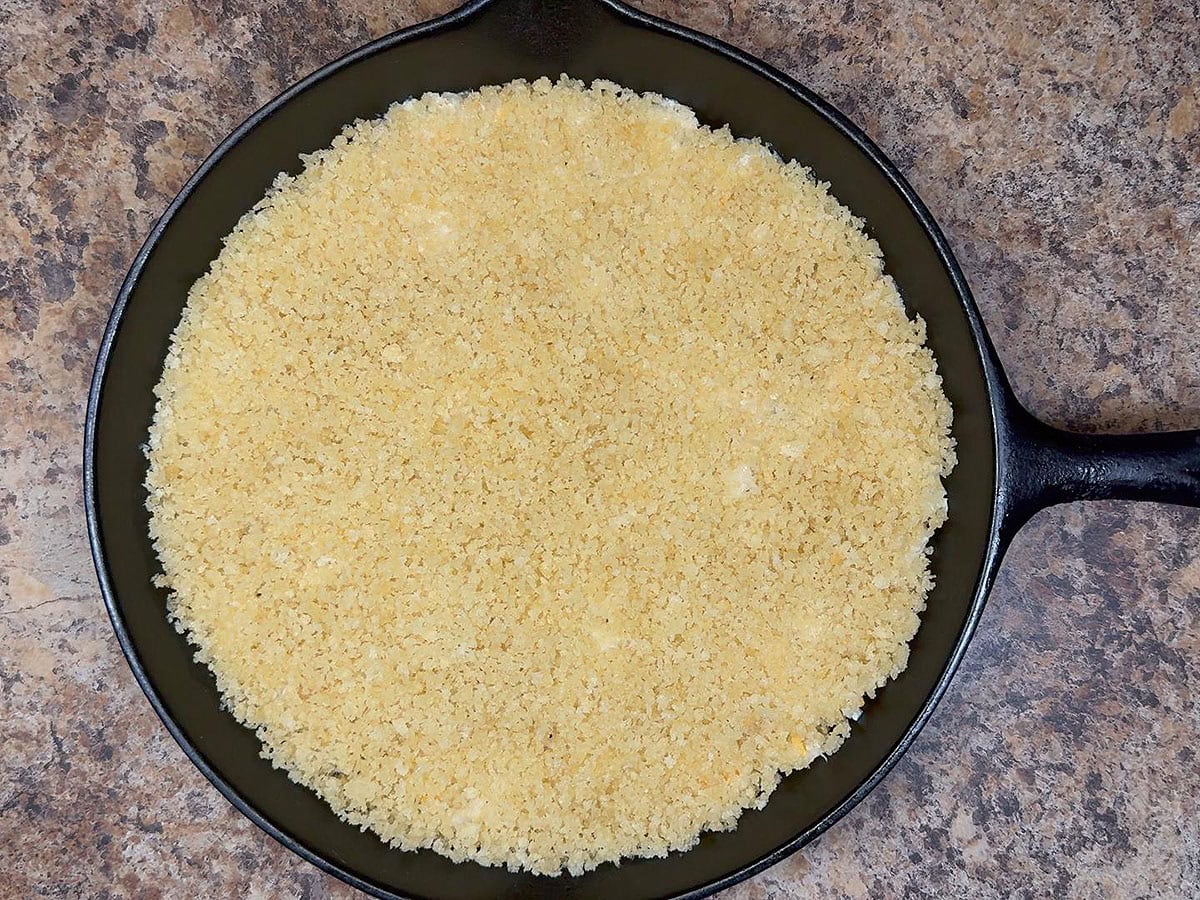
Step 4: Preheat the oven to 350°F. Pour the mashed cauliflower into an 8×8-inch casserole dish that has been prepared with non-stick spray. You can also use a 10-inch greased cast iron skillet. Spread the breadcrumb mixture in a single layer evenly over the top.
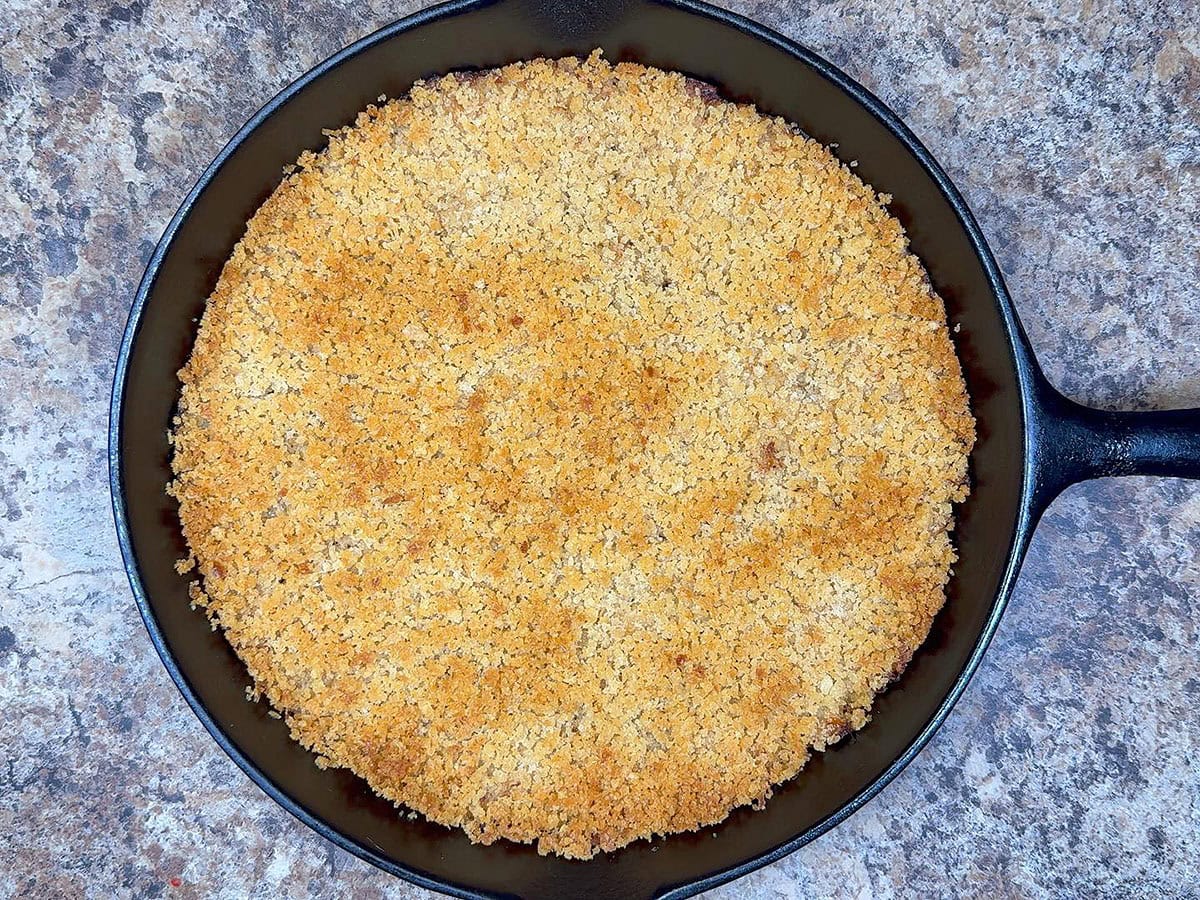
Step 5:Bake uncovered in the preheated oven for 40–50 minutes, until the top is golden brown and the cheese is bubbly.
Pro Tip: For an extra boost of flavor, try mixing in a handful of shredded sharp cheddar or topping it with crispy bacon bits before baking.
Serving suggestions
Serve this Mashed Cauliflower and Cheese Casserole alongside Sweet Tea Brined Roasted Chicken, grilled Steak Oscar, or Molasses Glazed Cast Iron Salmon. It’s also a great addition to Thanksgiving or Christmas dinner — the kind of perfect side dish that quietly steals the show.
Need more side dish ideas? You will love Green Beans with Ham and Potatoes, Savory Sweet Potato Casserole, Mashed Rutabaga with Bacon and Cheddar Cheese, or Stir Fried Brussels Sprouts.
Storage, freezing and reheating instructions
Storage:
Let the casserole cool completely to room temperature. If you made this in a cast iron skillet, you will need to transfer any leftovers to an airtight container. Storing it in the skillet will cause the skillet to rust. Store the casserole in the refrigerator for up to 4 days.
Freezing:
This casserole freezes beautifully! Assemble it as directed but don’t bake. Wrap tightly in plastic wrap and foil, then freeze for up to 3 months. When ready to use, thaw overnight in the fridge, then bake as instructed. You can also freeze leftovers — just make sure they’re fully cooled first.
Reheating:
For best results, reheat in the oven at 350°F until warmed through (about 20–25 minutes). Cover with foil to prevent the topping from over-browning, then uncover for the last couple of minutes to crisp it back up.
If reheating a single serving, microwave in 30-second intervals until hot, then pop it under the broiler for a minute or two to restore that crunchy topping.
Cauliflower and Cheese Casserole FAQ’s
Yes! Frozen cauliflower works just as well. Steam or boil it straight from frozen until very tender, then drain thoroughly before mashing to avoid excess water.
Absolutely! Use about 6–7 cups of riced cauliflower to replace one large head of fresh cauliflower. Cook the riced cauliflower according to package directions. Drain off any excess moisture, then continue with the recipe as written.
Absolutely. You can prepare and assemble the casserole a day ahead, cover it tightly, and refrigerate. Bake just before serving. It’s a great make-ahead dish for holidays or busy weeknights.
For an ultra-smooth texture, stir in a splash of heavy cream or a spoonful of cream cheese while mixing. You can also blend the cauliflower in a food processor for a velvety finish.
Yes. If you’re avoiding carbs or want a gluten-free version, skip the panko or replace it with crushed pork rinds for a crunchy low-carb alternative.
Yes. You’ll be using the pot-in-pot method here. Place the rack that came with your Instant Pot into the bottom of the metal insert. Add one cup of water. Next, place a pressure safe bowl, such as a Pyrex dish or metal bowl onto the rack in the insert. You can also purchase a steamer basket that fits the Instant Pot. Fill the bowl with the cauliflower. Cover and select the STEAM option. Allow the pressure to release naturally for about 10 minutes.
If you don’t have Montreal steak seasoning, mix your own using 1 teaspoon each of coarse black pepper and kosher salt, plus ½ teaspoon each of garlic powder, onion powder, crushed red pepper flakes, and paprika, and ¼ teaspoon ground coriander.
You can also use a basic steak seasoning, grill blend, or a check out my recipes for Homemade All-Purpose Seasoning or Blackened Seasoning. For a lighter flavor, Italian seasoning with black pepper works well too.
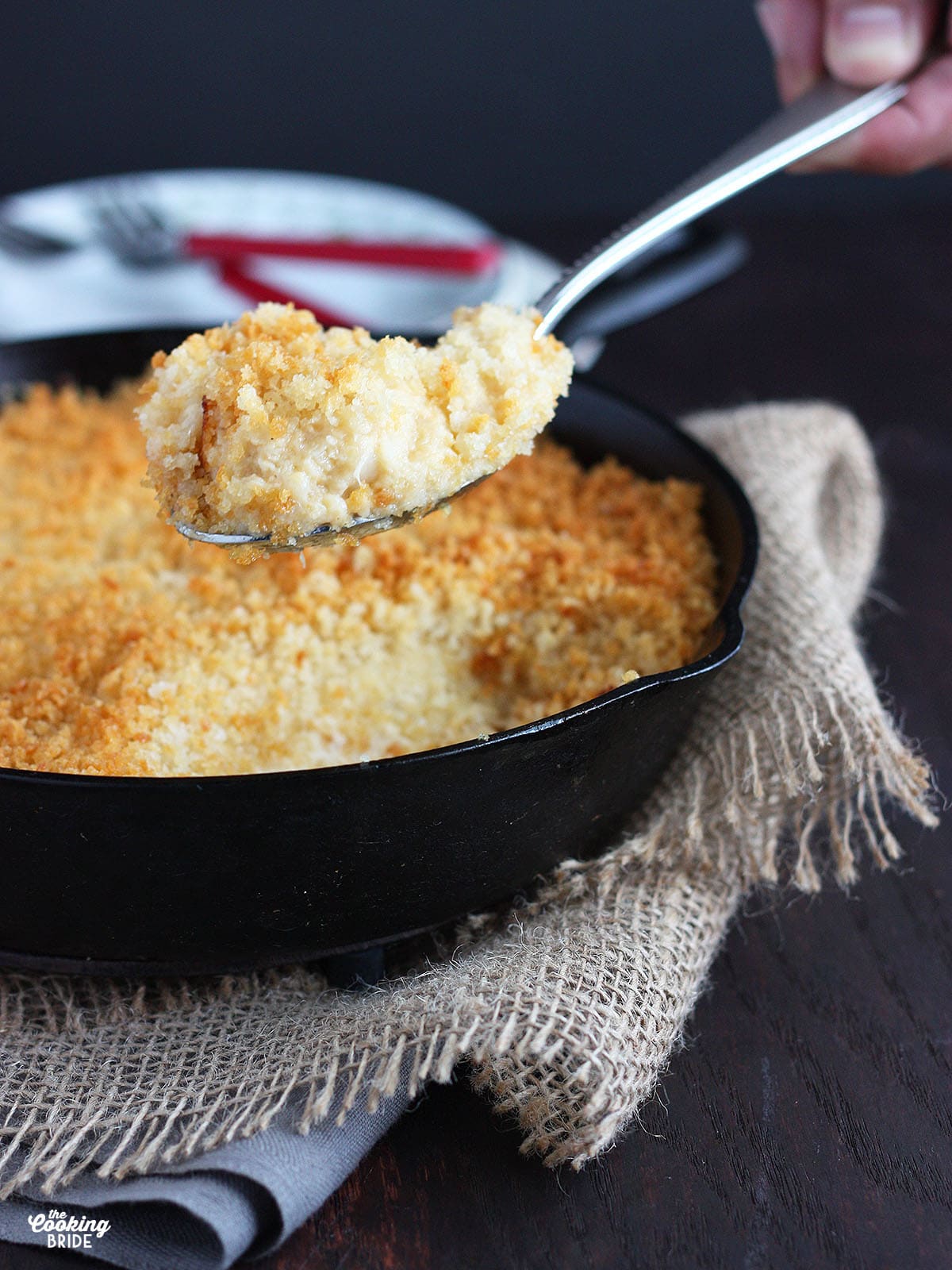
More delicious side dish recipes
Tried This Recipe? Let Me Know!
⭐️⭐️⭐️⭐️⭐️
If you made Mashed Cauliflower and Cheese Casserole, I’d love to hear how it turned out! Your ratings and reviews help others find the recipe and give me great feedback too.

Mashed Cauliflower and Cheese Casserole
Ingredients
For the cauliflower:
- 1 large head of cauliflower broken into florets
- ¾ cup shredded Parmesan cheese
- ½ cup shredded Colby-Monterey Jack cheese
- 3 tablespoons unsalted butter cubed
- ½ teaspoon garlic powder
- ¼ teaspoon Montreal steak seasoning
- ¼ teaspoon dried thyme
- Salt and pepper to taste
For the breadcrumb topping:
- 1 cup Panko bread crumbs
- ¼ cup unsalted butter melted
Instructions
- Fill a large stockpot about ¼ the way with water. Bring the water to a boil over high heat
- Place the cauliflower florets in a large steam basket over the pot. Cover. Reduce the heat to medium. Steam the cauliflower until very tender, about 20 minutes.
- Transfer the cauliflower to a large bowl. Mash with a potato masher, ricer or process through a foodmill.
- Stir in the cheeses, butter, garlic powder, salt and pepper to taste. Pour the cauliflower into a greased 8 x 8 x 2-inch greased casserole dish.
- Preheat the oven to 350 degrees F.
- Combine the breadcrumbs and melted butter. Season with salt and pepper to taste. Spread the breadcrumbs in a neven layer over the top of the mashed cauliflower.
- Bake the casserole uncovered for 40-50 minutes until the cheeses are melted and the topping is golden brown.
Video
Notes
The key to creamy mashed cauliflower is making sure the florets are cooked until they’re soft enough to mash easily. Undercooked cauliflower can turn out grainy. Drain excess moisture:
If the cauliflower seems watery after steaming, pat it dry or let it sit in a colander for a few minutes before mashing. This prevents a runny casserole. Mash to your liking:
For a smooth, potato-like texture, use a food processor or immersion blender. For a chunkier, rustic mash, stick with a potato masher. Mix while the cauliflower is warm:
Adding cheese and butter while the cauliflower is still warm helps everything melt together smoothly and evenly. Make it ahead:
Assemble the casserole a day in advance, cover, and refrigerate. Bake just before serving for an easy, stress-free side dish. Customize the topping:
For extra crunch, mix in grated Parmesan or chopped nuts with the breadcrumbs. If you prefer a softer topping, cover the casserole for the first 30 minutes of baking. Perfect for meal prep:
Portion leftovers into containers for quick, reheatable lunches or sides throughout the week.

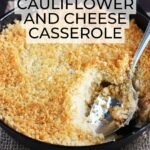
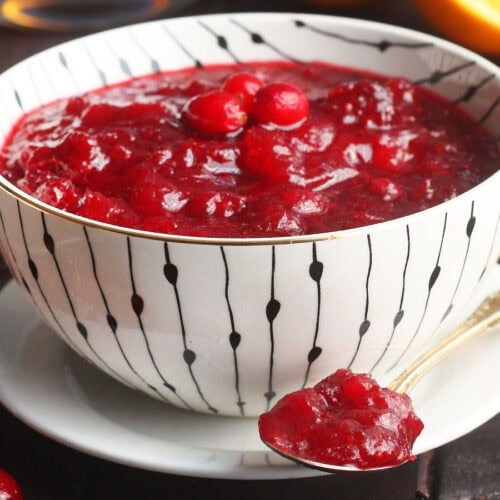
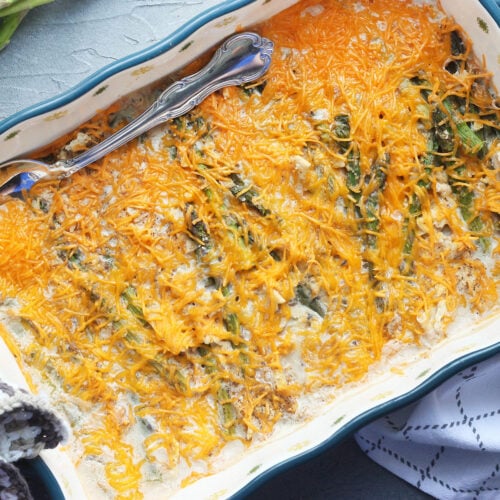
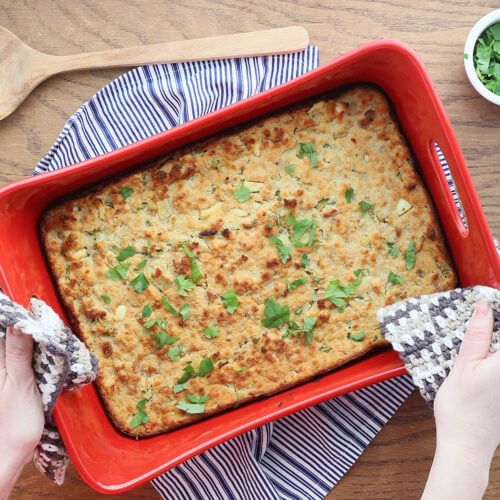
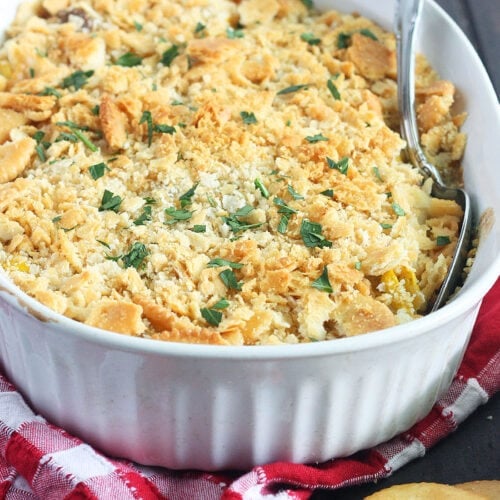
You won’t be dissappointed, Traci!
Oh I have sooooo been meaning to try a cauliflower gratin. I seriously want this on our holiday table this year! Just pinned and can’t wait to make it…thanks!
Ah, yes! This is much easier! I hope you do try it, Beth.
What a great side dish for any dinner! Cannot wait to try this!
I am a huge cauliflower fan!I’m definitely going to try this! I make a cauliflower with cheese sauce, but it requires a bechamel! What a pain! Your version looks so much easier!